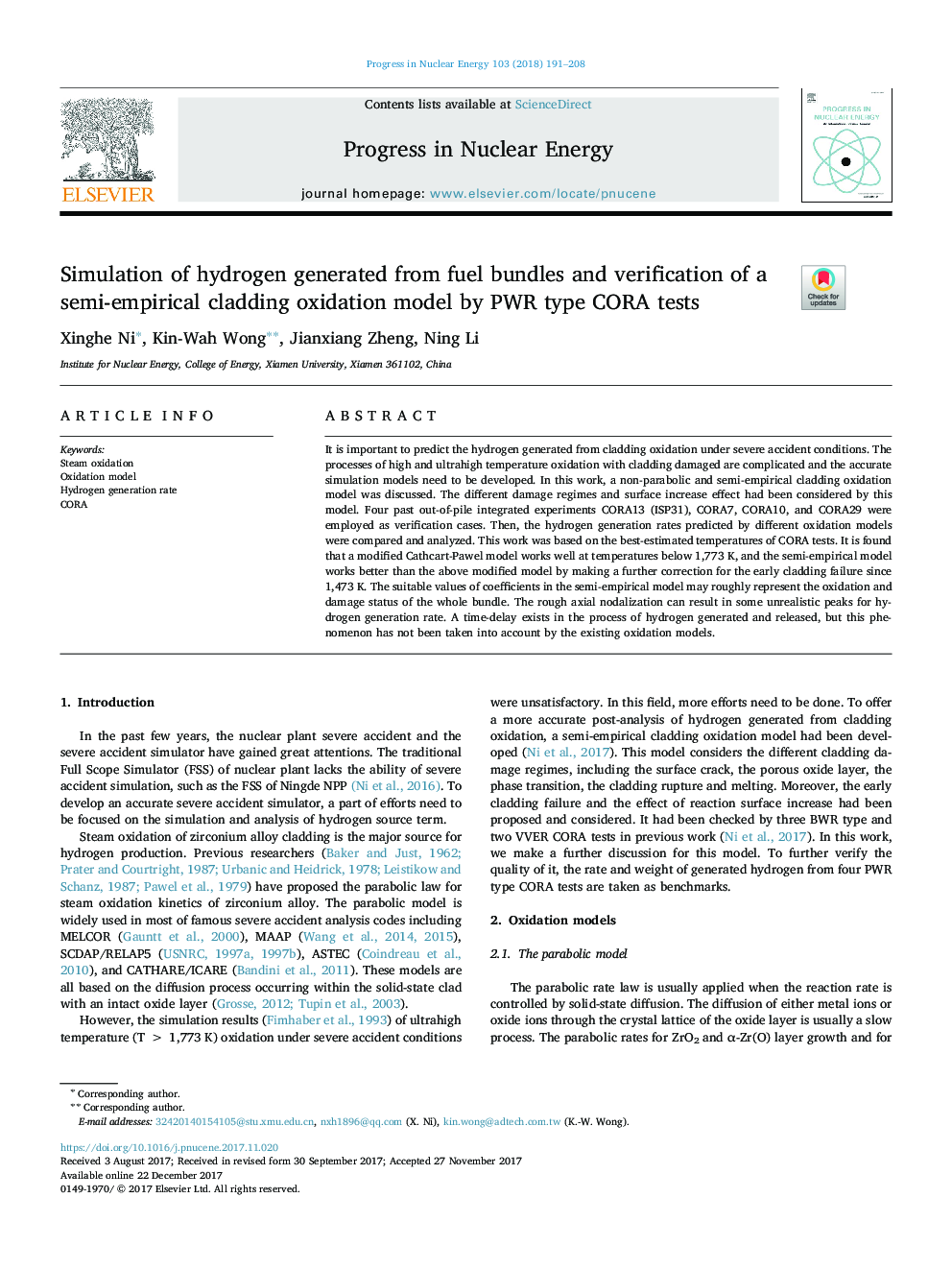| Article ID | Journal | Published Year | Pages | File Type |
|---|---|---|---|---|
| 8084522 | Progress in Nuclear Energy | 2018 | 18 Pages |
Abstract
It is important to predict the hydrogen generated from cladding oxidation under severe accident conditions. The processes of high and ultrahigh temperature oxidation with cladding damaged are complicated and the accurate simulation models need to be developed. In this work, a non-parabolic and semi-empirical cladding oxidation model was discussed. The different damage regimes and surface increase effect had been considered by this model. Four past out-of-pile integrated experiments CORA13 (ISP31), CORA7, CORA10, and CORA29 were employed as verification cases. Then, the hydrogen generation rates predicted by different oxidation models were compared and analyzed. This work was based on the best-estimated temperatures of CORA tests. It is found that a modified Cathcart-Pawel model works well at temperatures below 1,773Â K, and the semi-empirical model works better than the above modified model by making a further correction for the early cladding failure since 1,473Â K. The suitable values of coefficients in the semi-empirical model may roughly represent the oxidation and damage status of the whole bundle. The rough axial nodalization can result in some unrealistic peaks for hydrogen generation rate. A time-delay exists in the process of hydrogen generated and released, but this phenomenon has not been taken into account by the existing oxidation models.
Related Topics
Physical Sciences and Engineering
Energy
Energy Engineering and Power Technology
Authors
Xinghe Ni, Kin-Wah Wong, Jianxiang Zheng, Ning Li,
